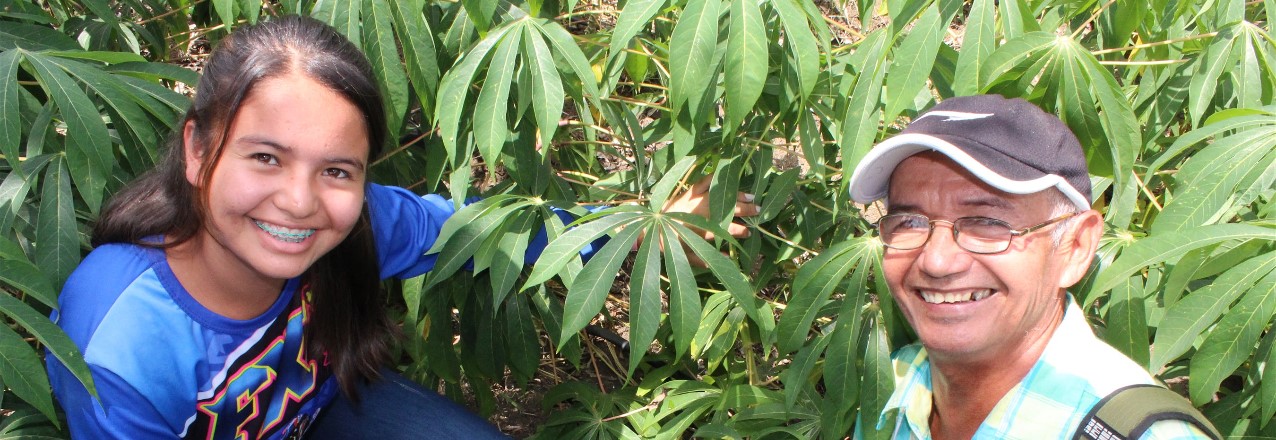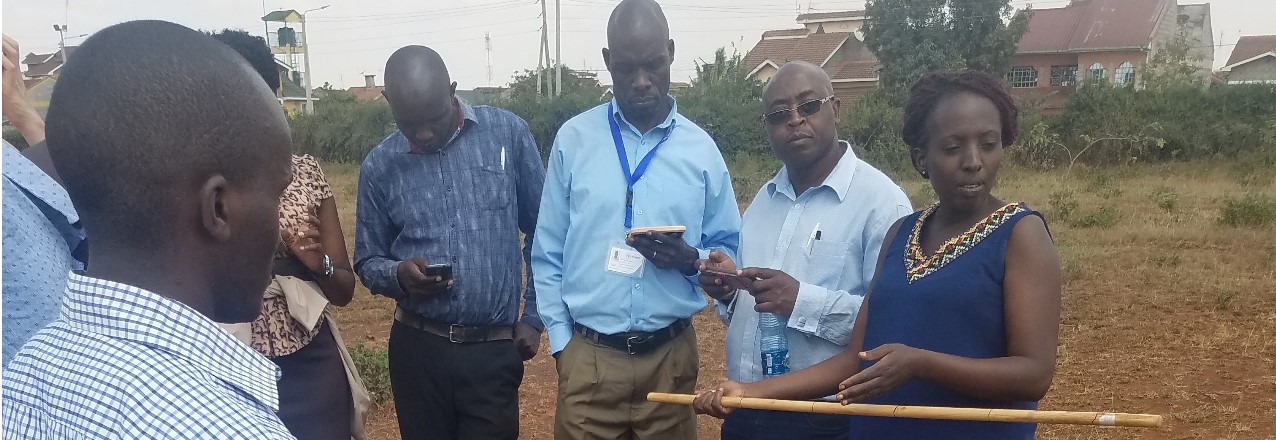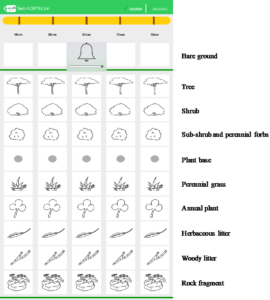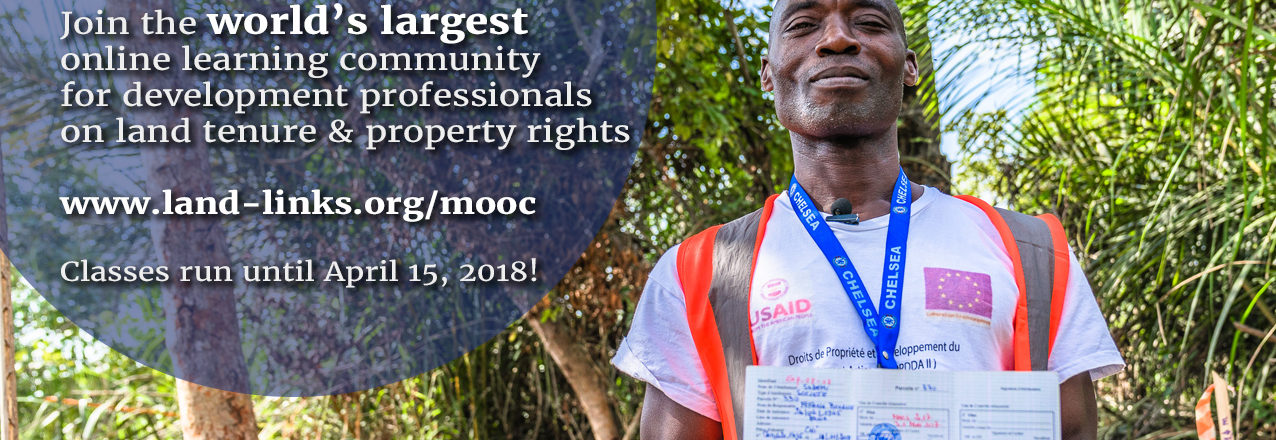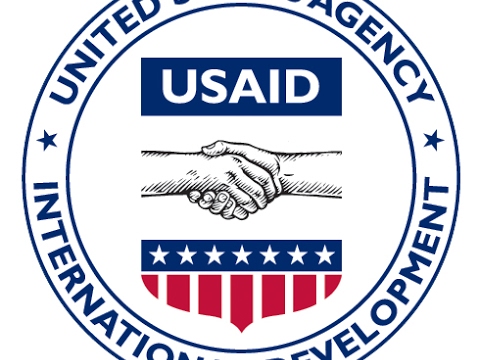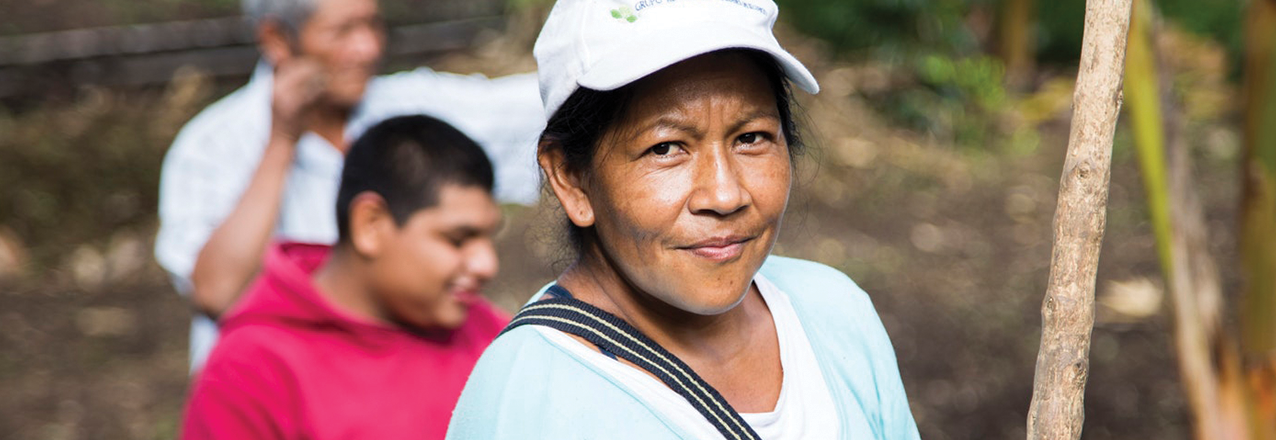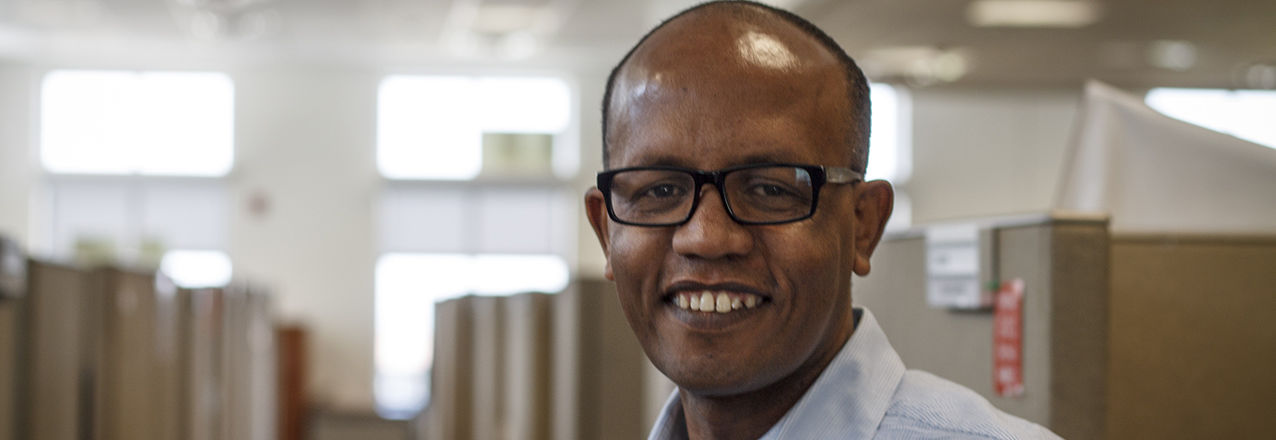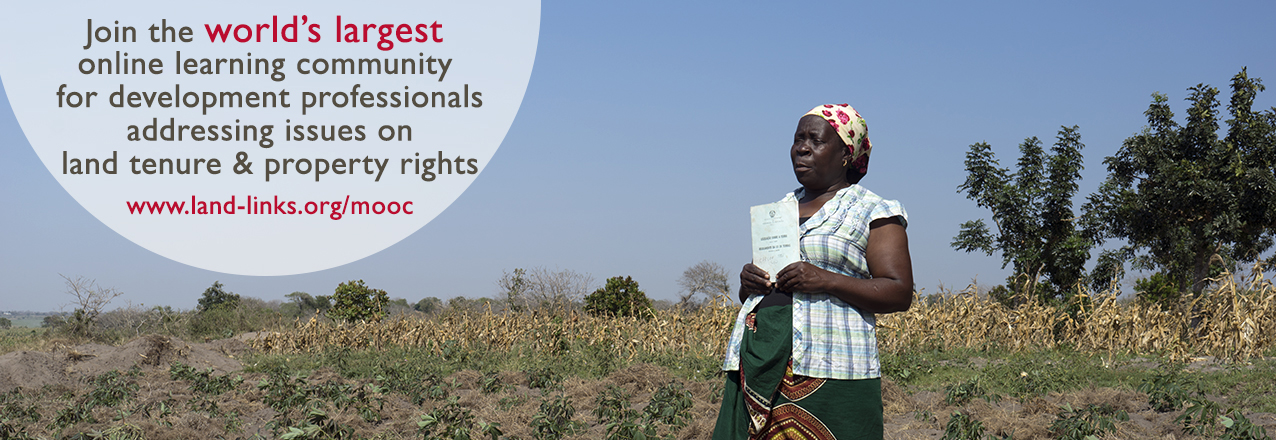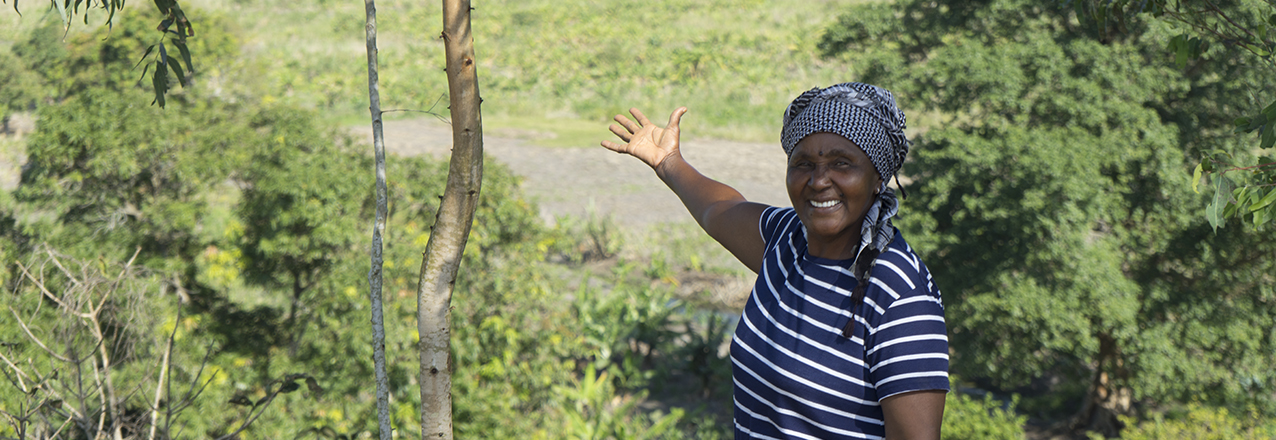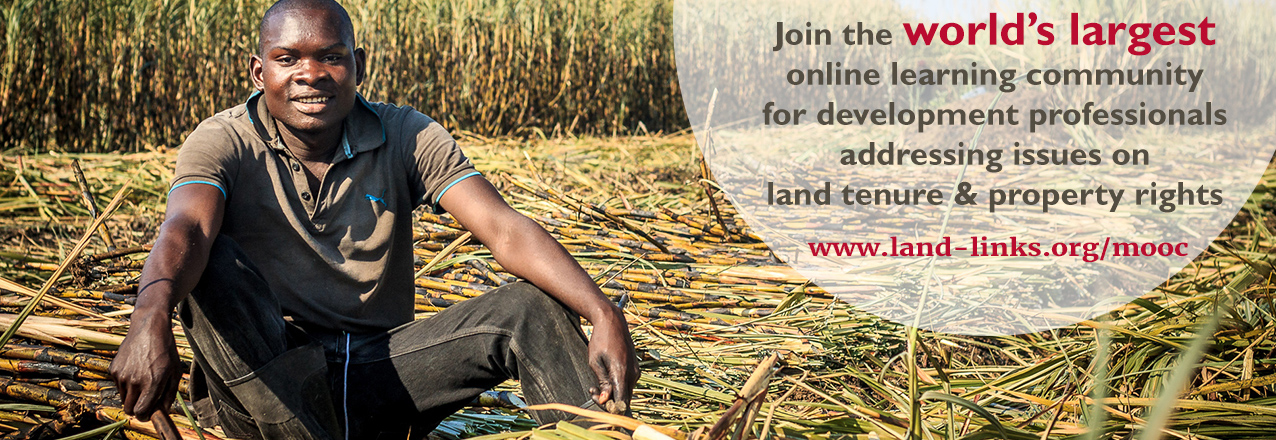Advances in Land Conflict Prevention, Capacity Building Tools, and Responsible Land-Based Investment
USAID’s programming in the land sector in 2017 showcased many of the ways that the Agency is strengthening communities and better preparing them for the day when they will no longer need development assistance. USAID worked with communities to address land conflict, build in-country land delimitation and administration capacity, and partnered with the private sector to make land-based investments less risky and more sustainable. Understanding the challenges and successes from this past year will help us build self-reliant communities who can use the valuable asset of land as the foundation for inclusive economic growth, to help create the conditions for peace and security, and to transform lives, communities, and countries.
Preventing Land Conflict
USAID is collaborating with governments at all levels to advance democracy and governance, and address conflict and support global stability. To share this important issue with the LandLinks community, USAID hosted a webinar discussing the important cross-sector impacts of land and conflict, specifically looking at land-related conflicts in Colombia and Ethiopia. Following the signing of the Colombia peace accord that officially put an end to 52 years of civil war, the story Getting Answers gave a personal account of how the USAID Land and Rural Development Program’s activities in Northern Cauca, Colombia is bringing 1,300 displaced residents home. We also looked at how USAID, through the Property Rights and Artisanal Diamond Development (PRADD) II project in the Central African Republic, is working with local leaders to reduce the flow of conflict diamonds.
The Right Tools and Knowledge to Build Local Capacity and Prosperity
Technology paired with tools and in-country capacity building are reinventing how USAID implements land programming and helps prepare people, communities, and partners to become more self-sufficient. In Zambia, villagers are using a USAID-developed mobile application to map and document land rights in remote areas—leading to more than 6,000 people and families having their land rights certified. In addition, LandLinks launched a learning platform for Mobile Applications to Secure Tenure (MAST), which shares the suite of land-focused applications developed under different USAID activities.
But apps and technology aren’t the only answer: making land management an inclusive process is a key technique for economic growth. In Cote d’Ivoire, the PRADD II project uses maps to demonstrate land use as well as opportunities for activities such as mining, fish farming, poultry raising, and cultivating cashew orchards. The USAID process brings together the entire community of stakeholders, including women, pastoralists, and youth, who have historically been left out of this process, to view the maps and discuss land management. Thanks to the inclusion of these groups, youth are contributing new ideas and techniques to modernize Cote d’Ivoire’s agricultural practices and reinvigorate its economy. And women are forming cooperatives that are transforming inactive diamond mining sites into vegetable farms, an important source of household income and food security.
One of the most practical and effective tools in our development toolbox to enable communities to grow small businesses and become more prosperous continues to be crop selection itself. Many of USAID’s projects focus on building communities’ knowledge on how to use their land for a stable and profitable supply of cash crops such as cacao in Colombia, cashews and honey in Cote d’Ivoire, and apricots in Tajikistan.
Forging Private Sector Partnerships
The private sector can play an important role in strengthening legitimate land tenure rights of vulnerable communities by directly supporting land tenure projects and by ensuring their investments do not infringe on such legitimate rights. This creates important win-win benefits for communities as well as for businesses, whose reputational, operational, and financial risks decrease when legitimate rights are respected.
Collaborative engagement with private sector partners that offered solutions to land-based investment challenges was a priority for USAID’s land programming in 2017. Through projects in Ghana, Kenya, and Mozambique, USAID worked with the private sector to raise awareness of the financial, operational, and reputational risks that insecure land rights pose for business investments and to incentivize responsible investments.
In Ghana, USAID launched a partnership with Hershey’s and its local cocoa supplier, ECOM Trading, to strengthen the land rights of cocoa farmers and improve cocoa yields. This partnership has already mapped 200 cocoa plots and clarified leases between farmers and customary landowners, and it has rehabilitated another 71 farms, improving productivity and reducing supply risks for farmers, ECOM, and Hershey’s. This also supports Hershey’s in meeting social and environmental goals under Tropical Forest Alliance 2020 commitments.
In Kenya, USAID and impact investor Moringa Partnership conducted an enhanced due diligence process related to land tenure and environmental risks for an investment in Kwale County. This work will help Moringa’s local investee identify and execute a business development strategy that respects the land tenure rights of legitimate landholders, reduces the company’s risks, and increases the sustainability of their business.
In Mozambique, USAID and Illovo Sugar, Ltd., Coca-Cola’s largest sugarcane supplier in sub-Saharan Africa, are helping farmers to document their legitimate land rights. This year, the project mapped and created documentation for the customary certification of land rights for 1,400 plots of sugarcane and other crops. The project is also developing a grievance mechanism that will provide a clear, transparent redress process for landowners and will reduce financial and operational risks for Illovo.
USAID’s Sarah Lowery looked at why the private sector is important to USAID’s land programming and, in a webinar that had a record-breaking 440 registered participants, interviewed private sector partners from the Ghana land cocoa program to understand the investor’s perspective on the importance of land rights.
Through this important programming, USAID’s work in land, addressing conflict, introducing the right knowledge and tools, and engaging with the private sector helps communities strengthen their land and resource rights, which are critical to meet food security and other strategic international development objectives. USAID is committed to taking these lessons learned into 2018 alongside our in-country partners—women, men, communities, the private sector, and governments—to promote inclusive economic growth, strengthen in-country capacity, and support their journey to self-reliance.


